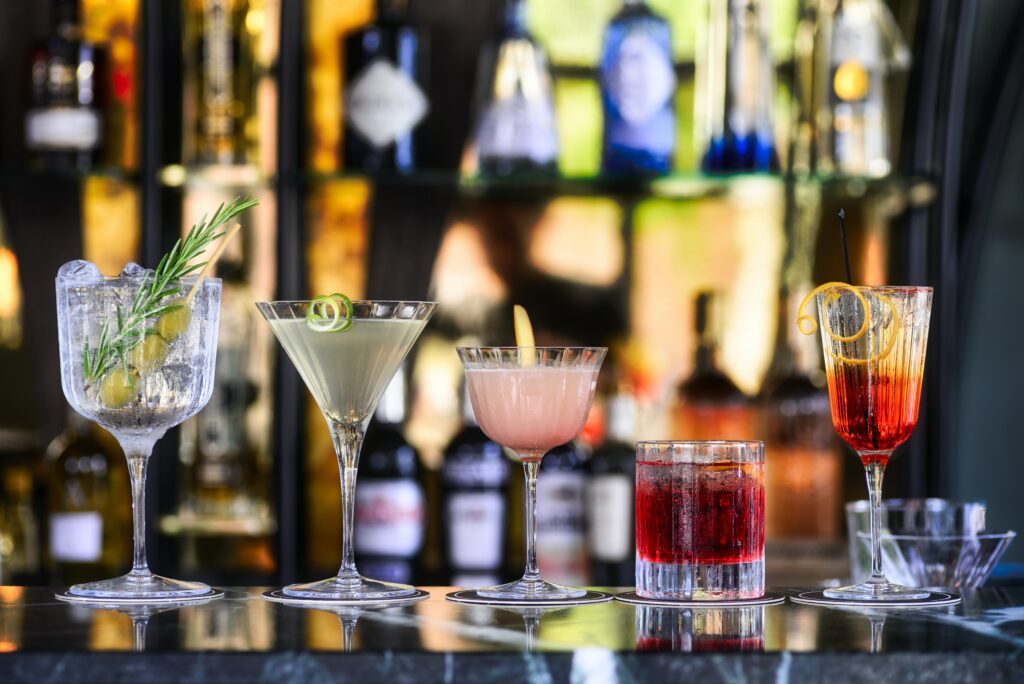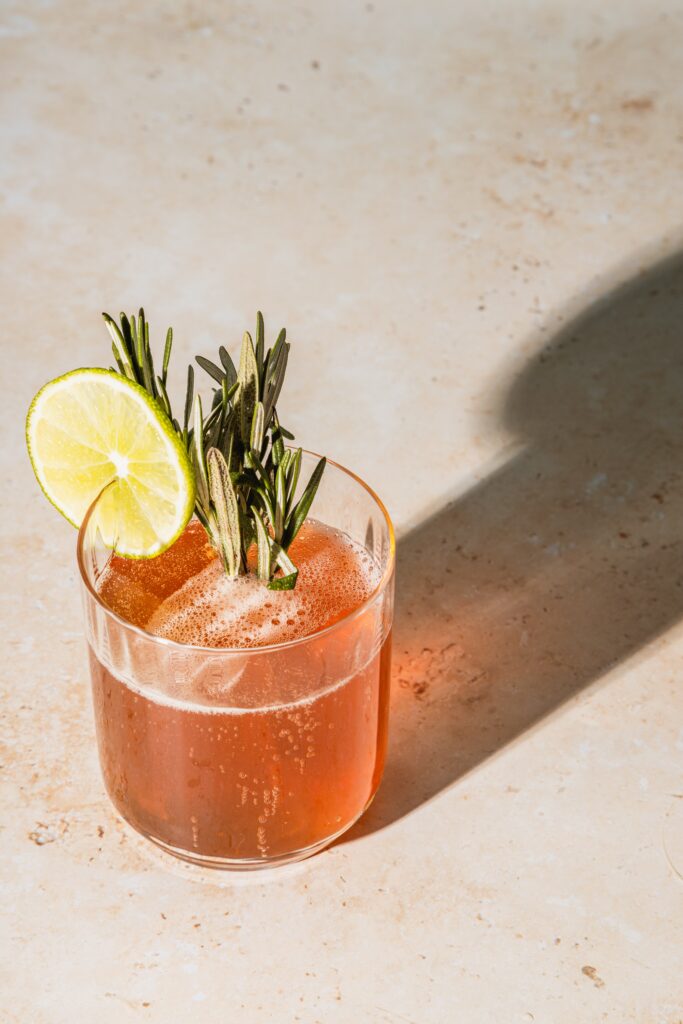Crafting a Compelling Cocktail Menu
Part 2 of Mastering Restaurant Cocktail Programming
In this series we’re covering the high points of mastering the development, roll out, and marketing of your cocktail program.
Step One: Develop a diverse and innovative cocktail menu
Developing an innovative and diverse cocktail menu can set your bar or restaurant apart from the competition and attract a wide range of customers. Here’s a step-by-step guide to help you create such a menu:
Understand Your Audience:
Before you start creating your cocktail menu, consider your target audience. Are you catering to a specific demographic or aiming for a broader appeal? Understanding your customer base will help you tailor your menu accordingly.
Research Trends and Competition:
Keep an eye on current cocktail trends and what other establishments are offering. This will help you identify gaps in the market and create unique offerings.
Diverse Base Spirits:
Offer a variety of base spirits, such as vodka, gin, rum, tequila, whiskey, and even non-alcoholic options. This ensures that there’s something for everyone on your menu.
Signature Cocktails:
Create a few signature cocktails that showcase your bar’s unique style and flavors. These should be memorable and distinct, giving customers a reason to return.
Seasonal Ingredients:
Incorporate seasonal and locally sourced ingredients whenever possible. Seasonal cocktails can generate excitement and keep your menu fresh.
Balance Flavors and Styles:
Include a mix of flavors and styles. Have cocktails that are sweet, sour, bitter, and savory. Offer classics alongside modern and experimental concoctions.
Cultural Diversity:
Explore cocktails from different cultures and regions. This can add an exotic and diverse element to your menu. For example, include a classic margarita alongside a Japanese-inspired sake cocktail.
Customizable Options:
Provide options for customization. Allow customers to choose their preferred base spirit, sweetness level, or garnishes for certain cocktails.
Visual Appeal:
Pay attention to the presentation of your cocktails. Aesthetic appeal can greatly enhance the customer experience. Invest in unique glassware, garnishes, and drink presentation techniques.
The above points reflect a strategic view. The list below is a more tactical approach.
Pairing Suggestions:
Offer food and cocktail pairing suggestions on your menu. This can help customers make informed choices and enhance their dining experience.
Training Staff:
Ensure that your bartenders are well-trained in making the cocktails on your menu. They should be able to explain each cocktail to customers and make consistent, high-quality drinks.
Regular Menu Updates:
Keep your menu dynamic by regularly introducing new cocktails and retiring less popular ones. This encourages repeat visits and creates a sense of excitement.
Customer Feedback:
Listen to customer feedback and be open to making adjustments based on their preferences and suggestions.
Promotions and Events:
Host themed nights or events that revolve around your cocktails. This can help draw attention to specific items on your menu and create buzz.
Responsible Service:
Always prioritize responsible alcohol service. Ensure that your staff is trained to recognize and handle overconsumption.
Marketing and Promotion:
Promote your new cocktail menu through social media, your website, and in-house signage. Consider running special promotions to attract attention.
Remember that innovation and diversity should be balanced with practicality. While it’s essential to have unique offerings, ensure that your bartenders can efficiently create the cocktails during busy service hours. Keep a balance between creativity and feasibility.
Step Two: Incorporate storytelling and thematic elements into drink names and descriptions
Incorporating storytelling and thematic elements into cocktail drink names and descriptions can elevate the overall experience for your customers and make your bar or cocktail menu more memorable. Here are some tips on how to do it effectively:
Choose a Theme: Start by deciding on a theme for your cocktail menu. This could be based on a specific era, place, cultural reference, or even a fictional story. The theme will serve as the foundation for your drink names and descriptions.
Craft Engaging Stories: Develop a short and engaging story for each cocktail. This could involve the drink’s origin, inspiration, or a fictional tale related to its ingredients. The story should be intriguing and relevant to the theme.

Use Evocative Language: When describing the cocktail, use descriptive and evocative language that ties back to the theme. Think about the mood, emotions, and imagery you want to convey to the customer.
Incorporate Relevant Ingredients: Weave the ingredients into the story or description. Explain why certain ingredients were chosen or how they relate to the theme. This helps customers understand the flavor profile and enhances their connection to the cocktail.
Pun and Wordplay: Get creative with wordplay and puns to come up with unique cocktail names that align with your theme. Playful and clever names can catch the customer’s attention.
Personal Touch: Share personal anecdotes or experiences related to the cocktail, if applicable. This adds authenticity and a personal connection to the drink.
Keep it Concise: While storytelling is important, keep the descriptions concise. Customers should be able to quickly grasp the essence of the cocktail without getting overwhelmed by lengthy narratives.
Visual Presentation: Consider the visual presentation of the cocktail. The glassware, garnishes, and colors should complement the theme and story.
Consistency: Maintain consistency in your storytelling across the entire menu. This helps create a cohesive and memorable experience for your customers.
Tasting Notes: Include tasting notes in your description. Describe the flavors and sensations customers can expect when they take a sip. This enhances the sensory aspect of the storytelling.
Here’s an example to illustrate these principles:
Cocktail Name: Prohibition Paradise

Description:
In the dark days of Prohibition, when spirits were banned but spirits were not, we crafted a secret elixir that whispered of rebellion and exotic adventures. Our “Prohibition Paradise” combines aged bourbon, sweet pineapple nectar, and a touch of aromatic bitters. Close your eyes, and you’ll find yourself transported to a hidden speakeasy, surrounded by the faint echoes of jazz and the scent of forbidden fruit. Sip slowly and savor the taste of freedom.
Remember that storytelling is not just about marketing; it’s about creating a memorable experience for your customers. By incorporating storytelling and thematic elements into your cocktail menu, you can make each drink a journey of taste and imagination.
Step Three: Utilize seasonal ingredients and trends for menu updates
Utilizing seasonal ingredients and trends for your cocktail menu updates can help keep your offerings fresh and appealing to your customers. Here are some steps to help you make the most of seasonal ingredients and trends in your cocktail menu:
Stay Informed:
Keep an eye on food and beverage industry publications, blogs, and social media to stay updated on current cocktail trends. Follow mixologists and bartenders who share their insights and creations.
Understand Seasonality:
Familiarize yourself with the seasons in your region and the availability of local ingredients. Seasonal ingredients are typically fresher and more flavorful.
Collaborate with Suppliers:
Build relationships with local farmers, growers, and suppliers who can provide you with fresh seasonal ingredients. They can inform you about what’s in season and may even be able to source unique items for your menu.
Experiment with Ingredients:
Get creative and experiment with seasonal fruits, herbs, spices, and even vegetables. Try infusions, syrups, and bitters made from seasonal ingredients to add unique flavors to your cocktails.
Develop Seasonal Signature Cocktails:
Create a few signature cocktails that showcase the best of the season. These can be the stars of your seasonal menu and draw in customers looking for something new.
Rotate Your Menu:
Plan to change your cocktail menu periodically, such as every season or every few months, to keep it fresh and exciting. Feature new seasonal ingredients and retire older cocktails.
Offer Seasonal Specials:
In addition to your regular menu, consider offering seasonal specials or limited-time cocktails. This can generate excitement and encourage customers to try something new.
Balance Familiarity and Innovation:
While it’s important to embrace seasonal trends, also consider the preferences of your regular customers. Balance the menu with both familiar classics and innovative seasonal creations.
Train Your Staff:
Ensure that your bartenders are knowledgeable about the seasonal ingredients and cocktails on the menu. They should be able to recommend drinks and answer customer questions.
Use Effective Marketing:
Promote your seasonal cocktails through various marketing channels, including social media, your website, and physical signage in your establishment. Highlight the uniqueness and limited availability of these drinks. The Share Spirits app can help!
Collect Customer Feedback:
Encourage customers to provide feedback on your seasonal cocktails. Their input can help you refine your offerings and better cater to their preferences.
Monitor Sales and Adjust:
Keep track of which seasonal cocktails are selling well and which aren’t. Use this data to adjust your menu and offerings accordingly.
Sustainability:
Consider sustainability in your ingredient choices. Highlight eco-friendly practices, such as sourcing locally and reducing waste, which can be a significant selling point.
Remember that the key to successfully utilizing seasonal ingredients and trends for your cocktail menu is to strike a balance between creativity, market demand, and the availability of fresh, high-quality ingredients. By doing so, you can keep your menu exciting and attract a diverse customer base.

